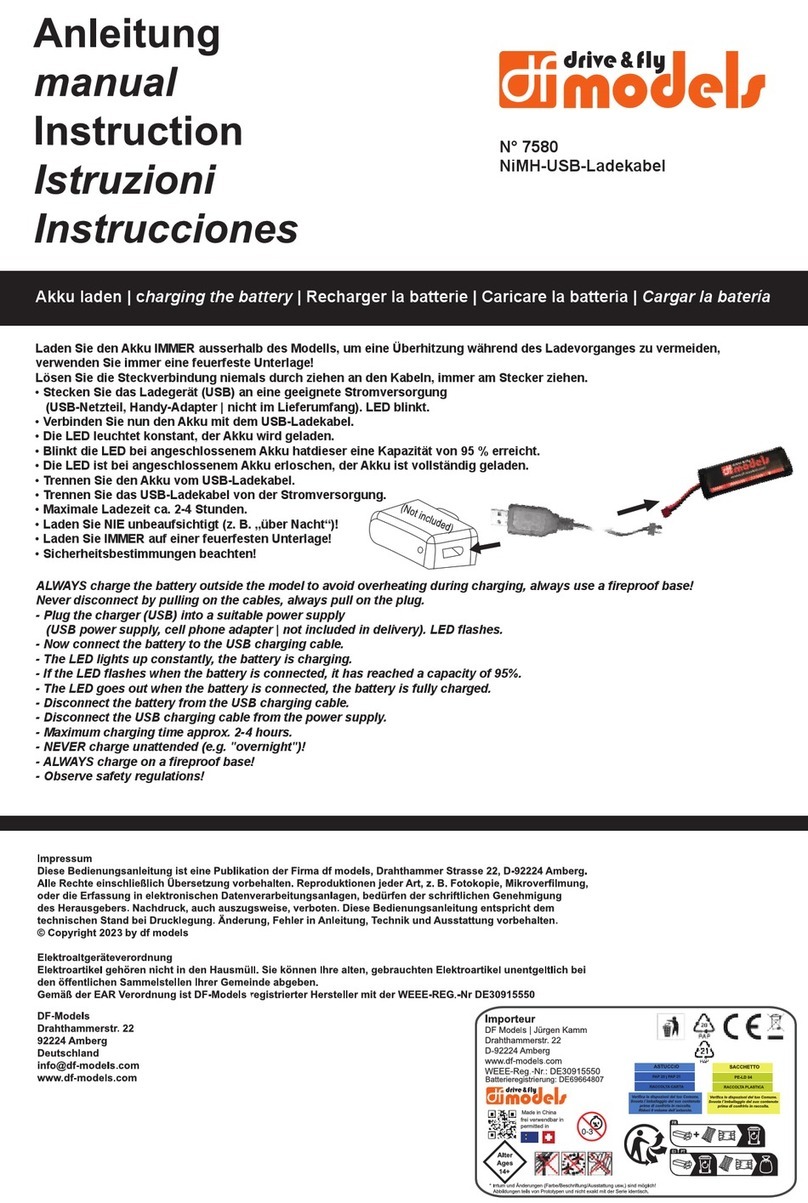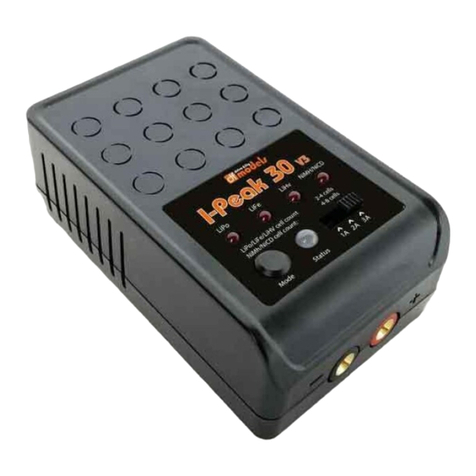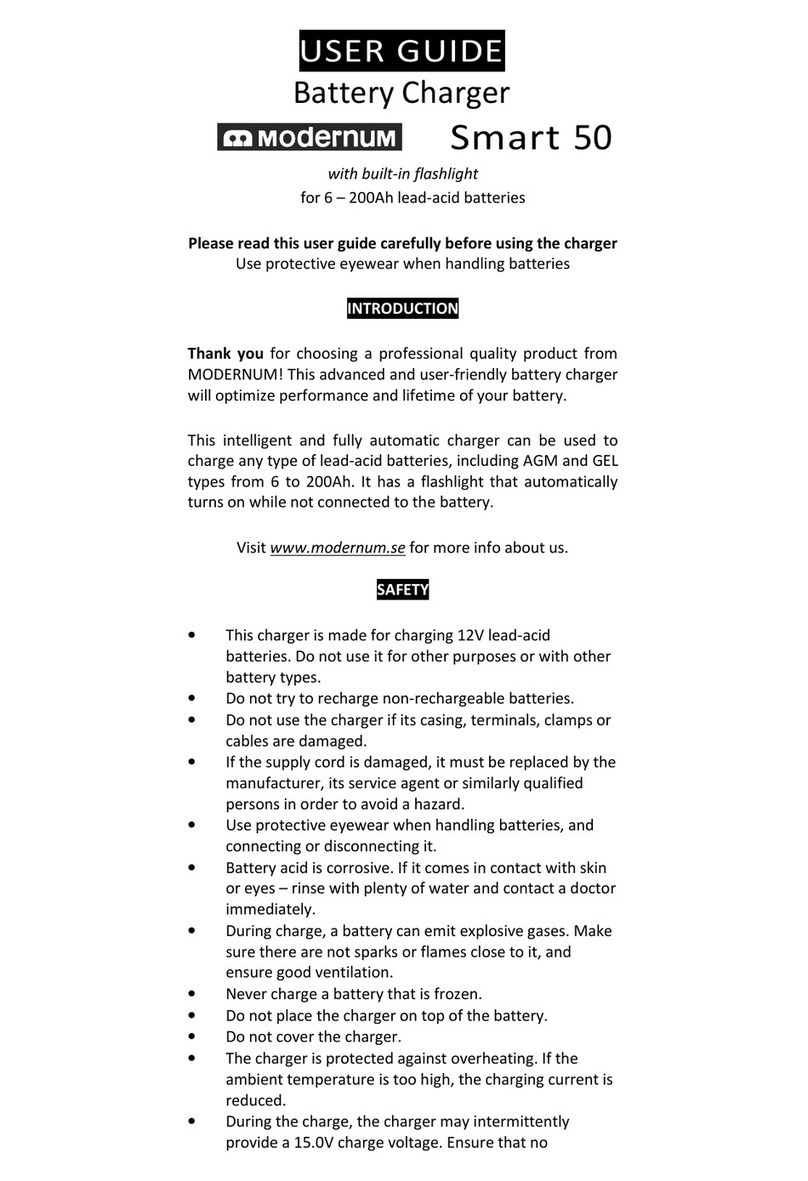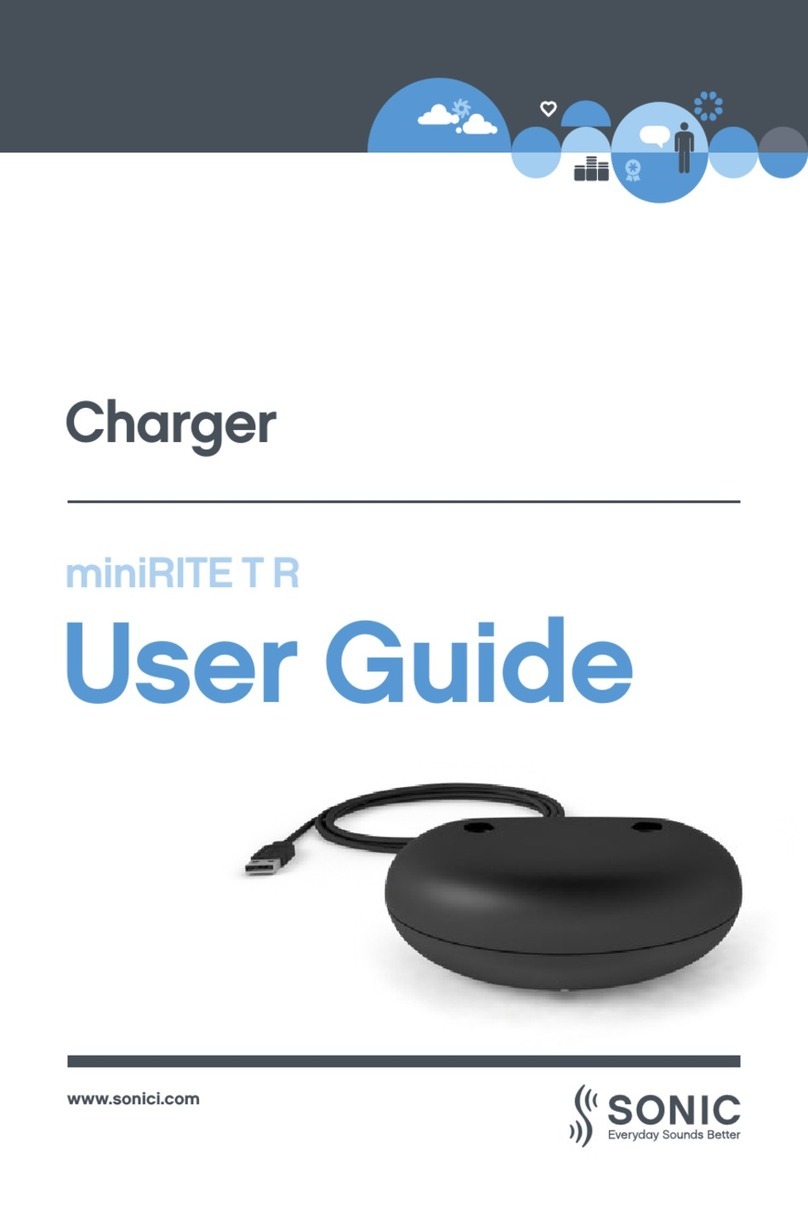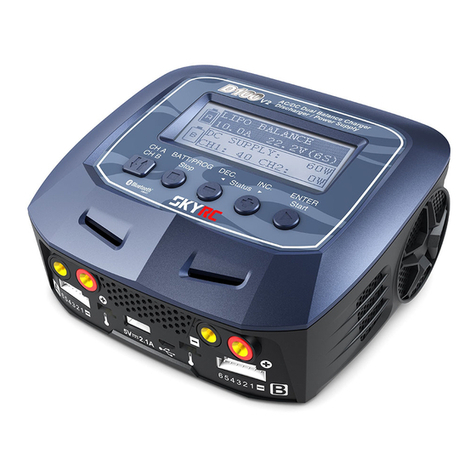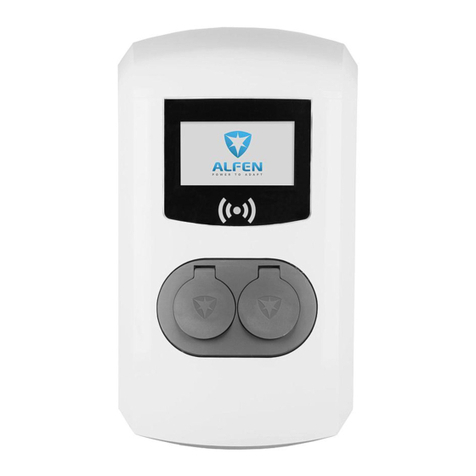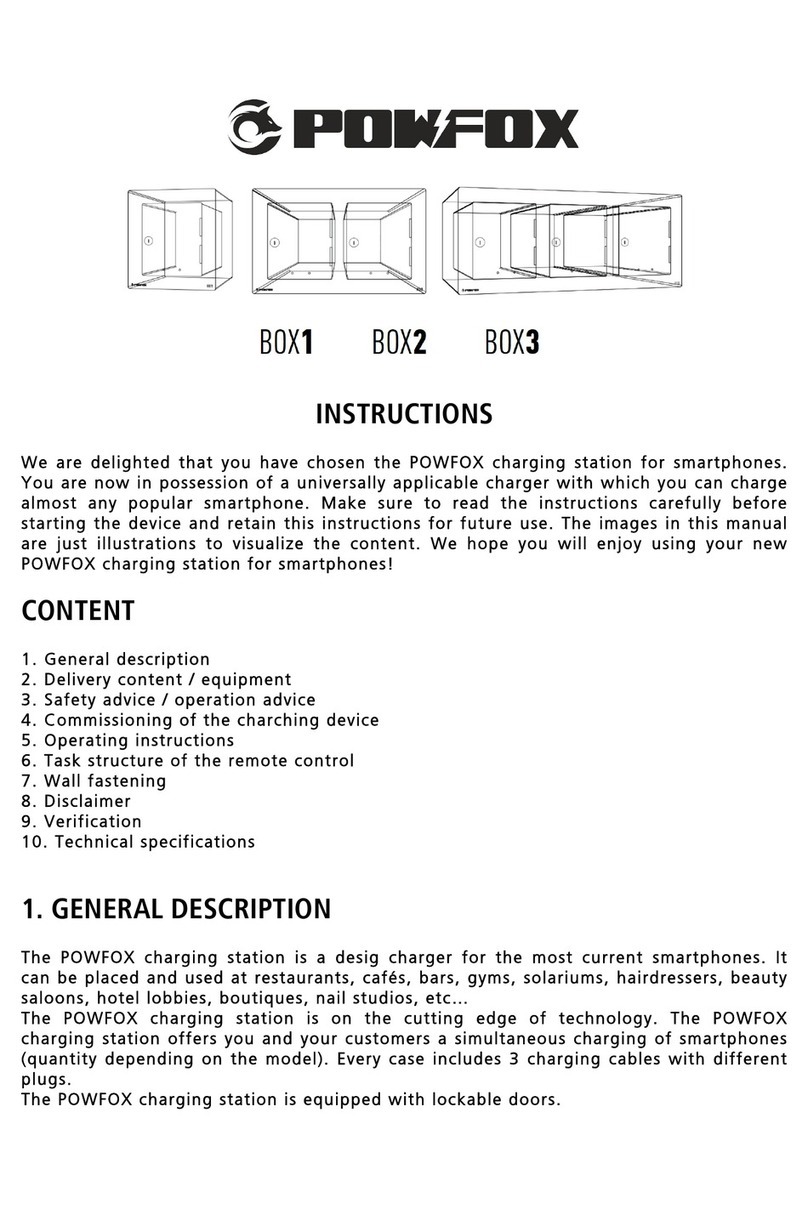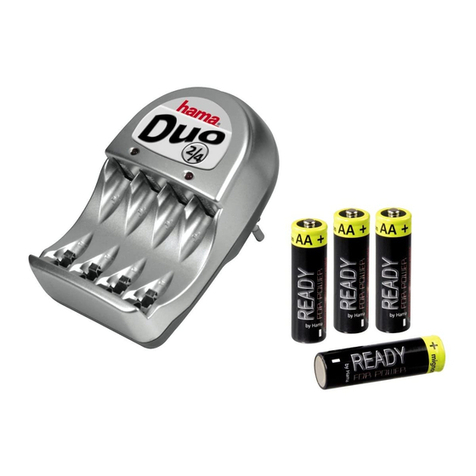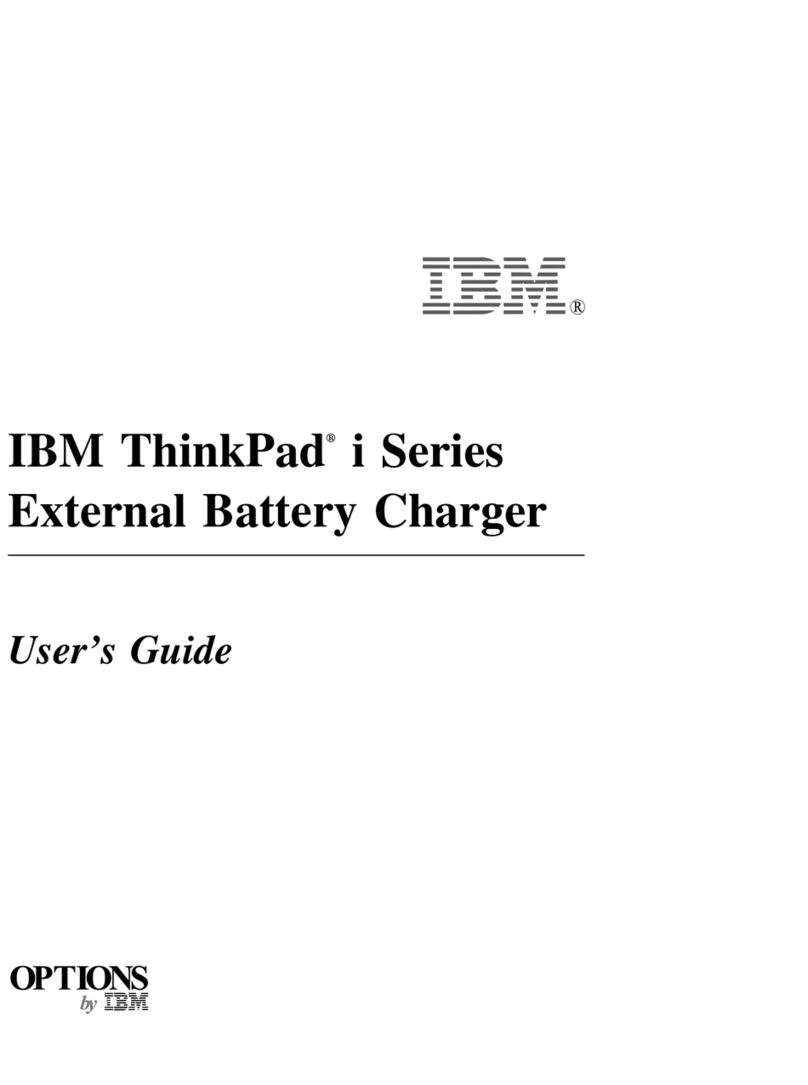DF-models I-PEAK 6 User manual

I-PEAK 6
I-PEAK 6
INSTRUCTION MANUAL
ENGLISH
Micro processor Controlled
Balance charger
I
N
S
T
R
U
C
T
I
O
N
M
A
N
U
A
L
Micro
processor
Controlle
Micro processor Controll
e
B
alance char
g
e
r

2www.df-models.com
WARRANTY
We guarantee this product to be free of manufacturing or assembly defects for a period of one year
from time of purchase. This does not affect your statutory rights. The warranty only applies to material
or operational defects, which are present at the time of purchase. During that period, we will repair or
replace free of service charge for products deemed defective due to those causes. You will be required
to produce proof of purchase (invoice or receipt).
This warranty is not valid for any damage or subsequent damage arising as a result of a misuse, modi-
fication or for damage or consequential damage arising as a result of failure to observe the procedures
outlined in this manual. Operation of this product is carried out entirely at the risk of the operator.
Please note that, whilst every effort is made to ensure the accuracy of instructions and material
included with this product, mistakes can occur and neither distributors will be held liable for any loss
or damage arising from the use of this product or for any loss or damage arising from omissions or
inaccuracies in the associated instructions or materials included with this product.
We reserve the right to modify the design of this product, contents and manuals without prior notifica-
tion.
CONTENTS
Warranty ......................................................................................................................................... 2
Warning and safety notes............................................................................................................... 3
Introduction .................................................................................................................................... 4
Specifications........................................................................................................................... 4
Special features ....................................................................................................................... 4
Controls.......................................................................................................................................... 5
Before you begin ............................................................................................................................ 6
Before charging........................................................................................................................ 6
Batteries information and connection...................................................................................... 6
Important information on discharging...................................................................................... 6
Users Set-up .................................................................................................................................. 7
User settings and menu’s............................................................................................................... 8
Lithium polymer charge programs ................................................................................................. 9
Lithium LiLo/LiPo/LiFe program............................................................................................... 9
Charging lithium battery in the balance mode....................................................................... 10
Fast charging of Lithium battery ............................................................................................ 11
Storage control of Lithium battery ......................................................................................... 12
Discharging of Lithium battery .............................................................................................. 12
Voltage balancing and monitoring in the discharge process................................................. 13
Pb lead-sulphuric acid battery program....................................................................................... 13
Charging of the Pb battery.....................................................................................................13
Discharging of the Pb battery ................................................................................................ 14
NiCd/NIMH Battery Program........................................................................................................ 14
Charging of NiCd/NiMH battery............................................................................................. 14
Discharge of NiCd/NiMH battery ........................................................................................... 15
Charge/discharge and discharge/charge cycle of NiCd/NiMH battery.................................. 15
Data storage program .................................................................................................................. 16
Store data .............................................................................................................................. 16
Load data program ................................................................................................................ 16
Various information in the program .............................................................................................. 17
Program chart I-Peak 6 ................................................................................................................ 18
Error messages and warnings...................................................................................................... 20

3
www.df-models.com
WARNING AND SAFETY NOTES
These warnings and safety notes are particularly important. Please follow the instructions for
maximum safety; otherwise the charger and the battery can be damaged or at worst it can
cause a fire. Also read the chapter “Before you begin”.
• Never leave the charger unsupervised when it is connected to a power supply. If any malfunction
is observed immediately terminate the process and refer to the operation manual.
• Keep the unit away from dust, damp, rain, heat, direct sunshine and vibration. Do not drop it.
• The circuit of the unit is designed to be powered by an 11-18V power source .
• This unit and the battery to charge or discharge should be set up on a heat-resistant, noninflam-
mable and nonconducting surface. Never place them on a car seat, carpet or similar surface.
• Never use this charger inside a car, van or any other motor vehicle.
• Keep all inflammable volatile materials well away from the chargers operating area.
• Never charge batteries fitted inside models, always remove them before charging.
• Make sure you know the specifications of the battery to be charged or discharged to ensure
it meets the requirements of this charger. If the program is set up incorrectly the battery and
charger may be damaged and cause a fire.
NiCd/NiMH Voltage level: 1.2V/cell
Allowable fast charge current: 1C-2C
(depends on the performance of cell)
Discharge voltage cut off level: 0.85V/cell (NiCd), 1.0V/cell (NiMH)
Li-ion Voltage level: 3.6V/cell
Max. charge voltage: 4.1V/cell
Allowable fast charge current: 1C or less
Min. discharge voltage cut off level: 2.5V/cell or higher
LiPo Voltage level: 3.7V/cell
Max. charge voltage: 4.2V/cell
Allowable fast charge current: 1C or less
Discharge voltage cut off level: 3.0V/cell or higher
LiFe Voltage level: 3.3V/cell
Max. charge voltage: 3.6V/cell
Allowable fast charge current: 4C or less
Discharge voltage cut off level: 2.0V/cell or higher
Pb Voltage level: 2.0V/cell
(Lead-acid) Max. charge voltage: 2.46V/cell
Allowable fast charge current: 0.4C or less
Discharge voltage cut off level: 1.75V/cell or higher
- To avoid short-circuits between the charge lead always connect the charge cable to the charger
first, then connect the battery. Reverse the sequence when disconnecting.
- Do not connect more than one battery pack to this charger at any one time.
- Do not attempt to charge or discharge the following types of battery.
- A battery pack which consists of different types of cell (including different manufacturers)
- A battery that is already fully charged or just slightly discharged.
- Non-rechargeable batteries (Explosion hazard).
- Batteries that require a different charge technique from NiCd, NiMH, Li-Poly or Gel cells (Pb).
- A faulty or damaged battery.
- A battery fitted with an integral charge circuit or a protection circuit.
- Batteries installed in a device or which are electrically linked to other components.
- Batteries that are not expressly stated by the manufacturer to be suitable for the currents the
charger delivers during the charge process.

4www.df-models.com
INTRODUCTION
Thank you for purchasing the new I-Peak 6 Charger. This product is a rapid charger with a high
performance microprocessor and specialized operating software. Please read this entire operat-
ing manual completely and attentively before using this product, as it covers a wide range of
information on operating and safety.
Specifications
Operating voltage range: DC 11.0 ~ 18.0V
AC in: 100 ~ 240V • 50/60Hz
Circuit power: Max. charge power 50W
Max. discharge power 5W
Charge current range: 0.1 ~ 6.0A
Current drain for balancing Li-Po: 300mAh/cell
NiCd/NiMH battery cell count: 1~15 cells
Li-ion/Polymer cell count: 1~6 series
Gel cell battery voltage: 2V ~ 20V
Weight: 433g (Net Weight)
Dimensions: 135x 112 x 61mm
Special features
Optimal operating software
I-Peak 6 features the so-called AUTO function that set the feeding current during the process of
charging or discharging. Especially for Lithium batteries, it can prevent the overcharging which
may lead to an explosion due to the user’s fault. It can disconnect the circuit automatically and
alarm once detecting any malfunction. All the programs of this product were controlled through
two way linkage and communication, to achieve the maximum safety and minimize the trouble.
All the settings can be configured by users!
Internal independent lithium battery balancer
I-Peak 6 employs an individual-cell-voltage balancer. It isn’t necessary to connect an external
balancer for balance charging.
Balancing individual cells battery discharging
During the process of discharging, I-Peak 6 can monitor and balance each cell of the battery
individually. Error message will be indicated and the process will be ended automatically if the
voltage of any single one cell is abnormal.
Adaptable to various type of lithium battery
I-Peak 6 is adaptable to various types of Lithium batteries, such as Li-ion, LiPo and the new LiFe
series of batteries.
Fast and storage mode of lithium battery
Purposes to charge Lithium battery varies, ‘fast’ charge reduce the duration of charging, whereas
‘store’ state can control the final voltage of your battery, so as to store for a long time and protect
useful time of the battery.
Maximum safety
Delta-peak sensitivity: The automatic charge termination program based on the principle of the
Delta-peak voltage detection. When the battery’s voltage exceeds the
threshold, the process will be terminated automatically.
Automatic charging current limit: You can set up the upper limit of the charging current when
charging your NiCd or NiMH battery; it is useful for the NiMH battery of
low impedance and capacity in the ‘AUTO’ charging mode.

5
www.df-models.com
Capacity limit: The charging capacity is always calculated as the charging current mul-
tiplied by time. If the charging capacity exceeds the limit, the process
will be terminated automatically when you set the maximum value.
Temperature threshold: The battery’s internal chemical reaction will cause the temperature of
the battery to rise. If the temperature limit is reached, the process will be
terminated. This function is available by connecting optional tempera-
ture probe, which is not included in our package.
Processing time limit:
You can also limit the maximum process time to avoid any possible defect.
Input power monitoring: To protect the car battery used as DC input power from being damaged,
its voltage keeps being monitored. If it drops below the lower limit, the
process will be ended automatically.
Data store/load
The maximum five batteries’ data can be stored for users’ convenience. You can keep the data
pertaining to program setting of the battery of continuous charging or discharging. Users can call
out these data at any time without any special program setting.
Cyclic charging/discharging
1 to 5 cyclic and continuous process of charge>discharge or discharge>charge is operable for
battery refreshing and Balancing to stimulate the battery’s activity.
CONTROLS
Input power cable
11-18V DC
Input power cable
100 ~ 240V • 50/60Hz Temperature
Sensor port
LCD Screen
16 Characters
Balance Lead sockets
JST-XH ports
• Alter values
• See the status of individual
cells in balance charge mode
• Resume or Start charge
processes
• Confirm an action
• Scroll through the Main Menu
• Stop any charge processes
Important!
Please take note of the proper connection method when charging LiPo batteries (page 8). Incor-
rect use will damage the charger.
Insulate the croc clips when using the mains supply! When they touch each other, they will cause
a short circuit.
Output charge lead
4mm banana plug

6www.df-models.com
BEFORE YOU BEGIN
Before charging
Please bear in mind the following points before commencing charging:
• Did you select the appropriate program suitable for the type of battery you will be charging?
• Did you set up adequate current for charging or discharging?
• Have you checked the type of battery you are charging, i.e. Li-Po, NiMH, NiCd, Gel?
• Have you checked the battery voltage? Lithium battery packs can be wired in parallel and in
series, i.e. a 2 cell pack can be 3.7V (in parallel) or 7.4V (in series).
• Have you checked that all connections are firm and safe? Make sure there are no intermittent
contacts at any point in the circuit.
Batteries information and connection
During charge process, a specific quantity of electrical energy is fed into the battery. The charge
quantity is calculated by multiplying charge current by charge time. The maximum permissible
charge current varies depending on the battery type or its performance, and can be found in the
information by the battery manufacturer. Only batteries that are expressly stated to be capable of
quick-charge are allowed to be charged at rates higher than the standard charge current.
Connect the battery to the terminal of the charger: red is positive and black is negative. Due to
the difference between resistance of cable and connector, the charger can not detect resistance
of the battery pack, the essential requirement for the charger to work properly is that the charge
lead should be of adequate conductor cross-section, and high quality connectors which are
normally gold-plated should be fitted to both ends.
Always refer to the manual by the battery manufacturer pertaining to charging methods, recom-
mended charging current and charging time. Especially, the Lithium battery should be charged
according the charging instruction provided by the manufacturer strictly. Attention should be paid
to the connection of Lithium battery especially.
Do not attempt to disassemble the battery pack arbitrarily. Please be advised that Lithium battery
packs can be wired in parallel and in series. In the parallel connection, the battery’s capacity is
calculated by multiplying single battery’s capacity by the number of cells with the same total
voltage. The voltage’s imbalance may cause fire or explosion. Lithium battery is recommended to
charge in series.
Important information on discharging
The main purpose of discharging is to clean residual capacity of the battery, or to reduce the battery’s
voltage to a defined level. The same attention should be paid to the discharging process as charging.
The final discharge voltage should be set up correctly to avoid deep discharging. Lithium battery
can not be discharged to lower than the minimum voltage, or it will cause a rapid loss of capacity
or a total failure. Generally, Lithium battery doesn’t need to be discharged. Please pay attention
to the minimum voltage of Lithium battery to protect the battery.
Some rechargeable batteries have a memory effect. If they are partly used and recharged before
the whole charge is accomplished, they remember this and will only use that part of their capac-
ity next time. This is a ‘memory effect’. It is said that NiCd and NiMH batteries are suffering from
memory effect. NiCd has more memory effect than NiMH.
Lithium batteries are recommended to be discharged partially rather than fully discharged.
Frequent full discharging should be avoided if possible. Instead, charge the battery more often or
use a battery of larger capacity. Full capacity cannot be used until it has been subjected to 10 or

7
www.df-models.com
more charge cycles. The cyclic process of charge and discharge will optimize the capacity of
battery pack.
USERS SET-UP
LIXX V. Type
The screen shows the nominal voltage of Lithium batteries. There
are three kinds of Lithium batteries: LiFe(3.3V), Lilo(3.6V) or
LiPo(3.7V). This information is of critical importance! You have to
check the battery carefully to make sure it is set up correctly. If it
is different from correct value, explosion can occur during charge
process.
LIXX Check Time
To avoid from erroneous setting by users, I-Peak 6 detects the
cell count of Lithium battery automatically at the beginning
of charge or discharge process. But a battery that is deep-
discharged can’t be detected correctly. To avoid this error, the
time term can be set to verify the cell count by the processor.
Normally, 15 seconds are enough to detect the cell count cor-
rectly. You need to extend the time term limit for the battery of large capacity. But the charge
or discharge process may come to an end within the time term because of the time limit
decided by the wrong count if you set too long time limit for the battery of small capacity.
This may cause fatal error. You have to extend the time term if the processor detect the cell
count incorrectly at the beginning of charge or discharge process. Otherwise, default value is
recommended to use.
Delta Peak Sensitivity
The “NIMH Sensitivity D. Peak” shows the trigger voltage for au-
tomatic charge termination of NiMH and NiCd battery. The valid
value ranges from 5 to 20 mV per cell. Setting the trigger voltage
higher brings a danger of overcharging; whereas setting it lower
brings a possibility of premature termination. Please refer to the
technical specification of the battery. (NiCd default:12mV, NiMH
default:7mV)
Temperature detection
There is a 3-pin port on the left of the charger used as tempera-
ture sensor port. When the screen displays “Temp”, you can use
the optional temperature probe to connect to the surface of the
battery.
Temp Cut-Off
The maximum temperature of the battery can be set during the
charge process. The process will be terminated automatically
to protect battery once the temperature of battery reaches this
value. This feature is accomplished through temperature probe
(optional).
LiFe
V. Type 3.3V
-
+
<”DEC” “INC”>
LiPo/Lilo/LiFe
CHK Time 10 min
-
+
<”DEC” “INC”>
NiMH Sensitivity
D. Peak Default
-
+
<”DEC” “INC”>
NiCd Sensitivity
D. Peak Default
-
+
<”DEC” “INC”>
Temp Select
Enabled
-
+
<”DEC” “INC”>
Temp Select Temp
Cut-Off 80C
-
+
<”DEC” “INC”>

8www.df-models.com
Waste Time
The battery becomes warm after cycles of charge/discharge process.
The program will insert a time delay after each charge/discharge
process to allow the battery enough time to cool down before
beginning next cycle of charge/discharge process. The valid value
ranges from 1 to 60 minutes. When the charge process starts, the
integrated safety timer starts to run simultaneously. If error detected
or the termination circuit can not detect whether the battery is fully charged or not, this unit is
programmed to prevent overcharging. Please refer to the below statement to calculate the timer
you set.
Capacity Cut-Off
The program provides maximum capacity protection function. If the
Delta peak voltage can not be detected or the safety timer times out,
the charge process will stop automatically, when the battery reaches
the user-set maximum charge capacity.
Key Beep / Buzzer
The beep to confirm users’ operation sounds every time a button
is pressed. The beep or melody sounds at various times during
operation to confirm different mode change. These functions can be
switched on or off.
Input Power
This function monitors the voltage of the input battery used to power
this charger. If the voltage is lower than user-set value, the program
will end forcibly to protect the input battery.
Safe timer Calculation
When charging NiCd or NiMH batteries, divide the capacity by cur-
rent, then divide the result by 11.9, set this number of minutes as
the value for safety timer setting. If the charger stopped at this time
threshold, about 140% of the capacity will have been fed into the
battery.
For example:
Capacity Current Safety Time
2000mAh 2.0A (2000/2.0=1000)/11.9=84 minutes
3300mAh 3.0A (3300/3.0=1100)/11.9=92 minutes
1000mAh 1.2A (1000/1.2=833)/11.9=70 minutes
USER SETTINGS AND MENU’S
As default this charger will be set to typical user settings when it is connected to a 12V battery
for the first time. The screen displays the following information in sequence and the user can
change the parameter on each screen.
If you need to alter the parameter value in the program, press Start/Enter key to make it blink then
change the value with ”INC”or”DEC” key. The value will be stored by pressing Start/Enter key once.
Waste time
CHG/DCHG 5 min
-
+
<”DEC” “INC”>
Capacity Cut-off
ON 5000mAh
-
+
<”DEC” “INC”>
Key Beep ON
Buzzer ON
-
+
<”DEC” “INC”>
Input power low
Cut-Off 10.0V
-
+
<”DEC” “INC”>
Safety timer
ON 120 min
-
+
<”DEC” “INC”>

9
www.df-models.com
By pressing the “Batt Type/Stop” button repeatedly the main menu will scroll through the differ-
ent charge program options and the user settings option.
To select an option from the main menu press the “Start/Enter” button.
Please consult the end of this manual for a program chart with all the different options of the
I-Peak 6.
LITHIUM POLYMER CHARGE PROGRAMS
Important!
• The following program is only suitable for charging Lithium-polymer batteries with a nominal
voltage of 3.7V/cell. Do not try to charge any other type of battery using this program.
Individual Cell Connection Diagram shows the correct way to connect your battery to the
I-Peak 6 charger while charging in the balance charge program mode only.
Warning
Failure to connect as shown in Individual Cell Connection Diagram will damage this charger.
This balance charging function is designed for JST-XH balance leads only. Do not try and fit any
other type of balance lead directly into this chargers balance ports. (If you are not sure what type
of lead you have then check with your local model shop before connecting to the balance ports
on this charger.)
The main battery leads must be connected along with the balance lead connector before charg-
ing your battery.
Individual Cell Connection Diagram (pin-assignment of 8-pin)
+
+
LiPo 6S
-
+
-
+
-
+
-
+
LiPo 5S
+
3S
-
+
LiPo 4S
-
1cell
2cell
3cell
4cell
5cell
6cell
1cell
2cell
3cell
4cell
5cell
6cell
+ +
2S
LiPo 3S
+
-
--
LiPo 2S
-
+
1S
Top View
Top View
+
-
LiPo 1S
-
-
Individual
bal.port
Individual
bal.port
WARNING: If using crock clips make sure they are unable to touch!
Lithium LiLo/LiPo/LiFe program
• The program is only suitable for charging/discharging Lithium-polymer batteries with a nominal
voltage of 3.3/3.6/3.7V/cell.
Different batteries have different charge technique. There are two methods termed as constant
voltage and constant current. The charge current varies according to battery capacity and
specification. The final voltage is very important; it should precisely match the voltage of the bat-
tery: LiPo is 3.6V, LiLo is 4.1V and LiFe is 3.6V. The current and voltage of the battery should be
correctly set.
1. Select this charge process by choosing LiPo CHARGE from the main menu by pressing the
“Start/Enter” button. The display should look similar to this:

10 www.df-models.com
LiPo FAST CHARGE
2.0A 11.1V(3S)
When you want to change the values of parameters, please press “Start/Enter” key to make
it blink and then use DES or”INC” to change the value. Then press “Start/Enter” key again to
store the value.
2. The left side of the first line shows the type of battery you choose. The value on the left of
the second line of the charger is current user set, After setting the current and voltage, press
“Start/Enter” key for more than 3 seconds to start the process (charge current: 0.1-5.0A, volt-
age: 1-5V).
3. This displays the number of cells you set up and the processor detects.
S:3SER R:3SER
CONFIRM (ENTER)
Top Line: S = Number of cells selected by you in the previous screen.
R = Number of cells detected by the charger.
If both numbers are identical you can start charging by press “Start/Enter” button. If not, press
“Batt type/Stop” button to go back to previous screen to carefully check the number of cells of
the battery pack before going ahead.
4. This screen shows the real-time status during charge process. Press “Batt type/Stop” key
once to stop the charge process.
Li3s 1.2A 12.59V
BAL 022:43 00682
Number of cells Charging current Battery voltage
Charging time Charged capacity
Charging lithium battery in the balance mode
• This function is for balancing the voltage of Lithium-polymer battery cells while charging. In the
balance mode, the battery needs to have a balance lead to connect to the individual port at
the right side of the charger. And you need to connect the battery’s output plug to the output
of charger.
Charging in this mode is different from the normal modes, because the built-in processor moni-
tors voltage of individual cell and control input current fed into each cell to normalize the voltage.
1. Select this charge process by choosing LiPo BALANCE from the main menu by pressing the
“Start/Enter” button. The display should look similar to this:
LiPo BALANCE
2.0A 11.1V(3S)

11
www.df-models.com
2. The value on the left side of the second lines sets the charge current. The value on the right
side of the second lines sets the battery pack’s voltage. After setting current and voltage,
press “Start/Enter” for more than 3 seconds to start the process.
3. This displays the number of cells you set up and the processor detects. `
S:3SER R:3SER
CONFIRM (ENTER)
Top Line: S = Number of cells selected by you in the previous screen.
R = Number of cells detected by the charger.
If both numbers are identical you can start charging by press “Start/Enter” button. If not, press
“Batt type/Stop” button to go back to previous screen to carefully check the number of cells of
the battery pack before going ahead.
4. This screen shows the real-time status during charge process. Press “Batt type/Stop” key
once to stop the charge process.
Li3s 2.0A 12.59V
BAL 022:43 00682
Number of cells Charging current Battery voltage
Charging time Supplied capacity
Fast charging of Lithium battery
Charging current will normally be reduced during the final stage of the charging process. This
specific CV process will increase the final charging current to end the charging process earlier.
The total charged capacity during fast charging will be a little less than during normal charging,
but charging time will be shortened accordingly.
1. Select this charge process by choosing LiPo FAST CHARGE from the main menu by pressing
the “Start/Enter” button. The display should look similar to this:
LiPo FAST CHG
2.0A 11.1V(3S)
You can set up the charging current and voltage of the battery pack. Press “Start/Enter” key to
display voltage confirmation.
2. Then press “Start/Enter” key again to confirm and begin to charge. This screen shows the real-
time status of “fast charging”. Press “Batt type/Stop” key once to stop the charge process.

12 www.df-models.com
Li3s 2.0A 12.59V
FAS 022:43 00682
Number of cells Battery voltage
Elapsed time Supplied capacity
Charging current
Storage control of Lithium battery
• This function is for charging/discharging batteries which are not used at once. This program is
designed for charging or discharging of batteries of specific original state. They are classified
by types: 3.75V Lilo, 3.85V LiPo and 3.3V LiFe.
The program will begin to discharge if the original state of the battery exceeds the voltage level of
storage.
At this screen, you can set up the current and voltage of the battery pack. Charging and dis-
charging will make the batteries come to the voltage level of “storage” state.
LiPo STORAGE
2.0A 11.1V(3S)
This screen shows the real-time status charging. Press “Batt type/Stop” key once to stop the
charge process.
Li3s 2.0A 12.59V
STO 022:43 00682
Number of cells Charging or discharging
current Current battery voltage
Elapsed time Supplied capacity
Discharging of Lithium battery
The value of discharge current on the left cannot exceed 1C, and the value on the right cannot
be under the voltage recommended by the manufacturer to avoid deep discharging. Press “Start/
Enter” for more than 3 seconds to start charging.
LiPo DISCHARGE
1.0A 11.1V(3S)
This shows the real-time status of discharging, you can press “Batt type/Stop” key to stop dis-
charging.

13
www.df-models.com
Li3s 0.4A 12.59V
DSC 022:43 00682
Number of cells Charging current Battery voltage
Elapsed time Discharged capacity
Voltage balancing and monitoring in the discharge process
The processor monitors voltage of each cell when the battery packs are during its “storage”
and “discharging” process. To achieve this feature, plug each battery to the charger individually.
If voltage of any cell is abnormal, I-Peak 6 will show error message and terminate the program
forcibly. So if there is battery damage or disconnection, you can see the error message and press
”INC” to know which cell is damaged.
BATTERY VOL ERR
CELL LOW VOL
The processor detects voltage of one cell is too low.
4.14 4.16 4.09
2.18 0.00 0.00
The 4th cell was damaged. The value of voltage may be zero if disconnection occurs.
PB LEAD-SULPHURIC ACID BATTERY PROGRAM
• This program is only suitable for charging Pb lead-acid battery with nominal voltage from 2 to
20V.
Pb lead-acid battery is completely different from NiCd/NiMH battery. These batteries can only
deliver current lower in comparison to their capacity. The same restriction applies to the charging
process. Consequently, the optimum charge current can only be 1/10 of the capacity.
Pb battery cannot be used for fast-charging, please follow the instructions provided by the bat-
tery manufacturer. You can press “Start/Enter” key to make it blink and alter the value of param-
eters using ”INC”or”DEC” key, press “Start/Enter” key to store the value.
Charging of the Pb battery
Set up the charge current on the left and nominal voltage on the right. Range of current is 0.1-
5.0A, the voltage should match the battery being charged. Press “Start/Enter” key for more than
3 seconds to start charging.
Pb CHARGE
4.0A 12.0V(6P)
The screen displays the real-time discharging status. Press “Start/Enter” key to alter discharge

14 www.df-models.com
current. Press “Start/Enter” key again to store the parameter value you set. Press “Batt type/
Stop” key to end the program.
Pb-6 4.0A 12.59V
CHG 022:43 00682
Battery type Charge current Battery voltage
Elapsed time Charged capacity
Discharging of the Pb battery
Set up the charge current on the left and nominal voltage on the right. Range of discharge current
is 0.1-5.0A, the voltage should match the battery being charged. Press “Start/Enter” key for more
than 3 seconds to start charging.
Pb DISCHARGE
1.0A 12.0V(6P)
The screen displays the real-time discharging status. Press “Start/Enter” key to alter discharge
current. Press “Start/Enter” key again to store the parameter value you set. Press “Batt type/
Stop” key to end the program.
Pb-6 0.4A 12.59V
DSC 022:43 00682
Battery type Discharge current Battery voltage
Elapsed time Discharged capacity
NICD/NIMH BATTERY PROGRAM
Charging of NiCd/NiMH battery
• This program is for charging and discharging of NiCd/NiMH batteries associated with R/C
models applications.
You can press “Start/Enter” key to make it blink and then ”INC” or ”DEC” to change the param-
eter value. Press “Start/Enter” key to store the value.
NIMH CHARGE Aut
CUR LIMIT 5.0A
This program charges the battery using the current you set up. In the “auto” state, you should
set up the upper limit of the charge current to avoid damage by excessive feeding current. Some
batteries of low resistance and capacity can lead to higher current in the “auto” charging mode.

15
www.df-models.com
But in the manual mode, it will charge with the current you set. You can make it blink in the cur-
rent field and press ”INC”and”DEC” at the same time to switch mode.
NIMH 2.0A 7.42V
CHG 022:45 00890
Battery type Charging current Battery voltage
Elapsed time Charged capacity
The screen shows the real-time status. Press “Batt type/Stop” key to end the program. The
sound will emitted to indicates the end of program.
Discharge of NiCd/NiMH battery
Set charge current on the left and the final voltage on the right. Range of the charge current is
0.1-1.0A; range of final voltage is 0.1-25.0V. Press “Start/Enter” key for more than 3 seconds to
start the program.
NIMH DISCHARGE
1.0A 11.5V
The screen indicates the discharging state. You can press “Start/Enter” key to alter discharge
current. Press “Start/Enter” again to store the value. Press “Batt type/Stop” key to stop discharg-
ing. The emitted sound alerts the end of discharging.
NIMH 1.0A 7.42V
CHG 022:45 00890
Battery type Battery voltage
Elapsed time Discharged capacity
Discharge current
Charge/discharge and discharge/charge cycle of NiCd/NiMH battery
You can set up sequence on the left and the number of cycles on the right. You can balance,
refresh and break-in the battery with this function .You can set a temporary cool-off procedure in
the user’s setting. Range of the cycle number is 1-5.
Press “Batt type/Stop” key to stop program, you can press
Start/Enter” key to alter charge current. The sound indicates
the end of program.
NIMH CYCLE
DCHG>CHG 3
NIMH 1.0A 7.42V
D>C 022:45 00890
Battery type
Elapsed time
Battery voltage
Supplied capacity
Discharge or charge current

16 www.df-models.com
When it approaches to the end, you can see the capacity
of the battery being charged or discharged. You can press
”INC”or”DEC” key to display result of each cycle.
DATA STORAGE PROGRAM
Store data
For your convenience, I-Peak 6 has a data storage and load program. It can store five battery
data representing the respective specifications of batteries. You can call back the data when
charging or discharging without setting up the program again.
Select PROGRAM SELECT SAVE DATA from the main menu. Press “Start/Enter” key to make
values blink, and use ”INC”or”DEC” to set up the parameter.
Setting of the parameter in this screen will not affect the charge and discharge
process. They just represent the specification of the battery. The following
screens will automatically be displayed matched with the battery type you
set up. The example is NiMH battery pack, including 12 cells, the capacity is
3000m Ah.
Set up the charge current in the manual mode, or current limit in the auto
mode. Press ”INC”and”DEC” key simultaneously to make the current field
blink to switch the charge mode.
Set up the discharge current and final voltage.
Set up the charge/ discharge sequence and cycle number.
Saving the data
PROGRAM SELECT
SAVE DATA
SAVE [01] NiMH
14.4V 3000mAh
NiMH CHARGE At*
CUR LIMIT 5.0A
NiMH DISCHARGE*
1.0A 11.0V
NiMH CYCLE *
DCHG>CHG 3
Start
Enter
<”DEC” “INC”>
<”DEC” “INC”>
-
+
<”DEC” “INC”>
-
+
<”DEC” “INC”>
-
+
<”DEC” “INC”>
Start
Enter
Data
number
Voltage Capacity
Start
Enter > 3 sec
DCHG 1 1314mAh
CHG 1 1430mAh
Save ...

17
www.df-models.com
Load data program
This program is to load the data stored at the “save data” program. Press “Start/Enter” key to make the data
field blink and press ”INC”or”DEC” for more than 3 seconds to load the data.
Choose the data number you want to call back. The data you want to call back will
be displayed.
Loading the data.
VARIOUS INFORMATION IN THE PROGRAM
You can inquire various information on the LCD screen during the charging and discharging proc-
ess. Press ”DEC”key, the charger will display users’ setting. You can press ”INC” key to monitor
voltage of each cell while the battery is connected with each port of the charger.
End Voltage
12.06V(3s) The final voltage when the program ended.
Capacity Cut-Off
ON 5000mAh
Safety Timer
ON 200min
USB/Temp Select
USB Enabled 3-pin connector is selected to be the USB port.
Ext.Temp 26C
The external temperature is displayed when the temperature probe is used.
IN Power Voltage
12.56V Present input voltage.
4.14 4.16 4.09
0.00 0.00 0.00
The battery is connected with each port through cable; you can
check voltage of each cell in the battery pack. When the cable is
connected with the ports on the right of the charger, the program
will display voltage of up to 6 batteries. The battery pack needs an
balancer connector connected with each cell.
PROGRAM SELECT
LOAD DATA
LOAD [01] NiMH
14.4V 3000mAh
Load ...
Start
Enter
Start
Enter > 3 sec

18 www.df-models.com
PROGRAM CHART I-PEAK 6
Batt. Dec
Type
PROGRAM SELECT
NiMH BATT
NiMH CHARGE Man
CURRENT 1.0A
Start
NiMH DISCHARGE
1.0A 25.0V
Dec
Inc
NiMH CYCLE
CHG>DCHG 5
Dec
Inc
BATTERY CHECK
WAIT...
NiMH 0.2A 9.03V
CHG 000:31 00016
2sec Start
2sec Start
Dec Inc
Start
NiMH CHARGE Man
CURRENT 5.0A
BATTERY CHECK
WAIT...
NiMH 0.7A 7.94V
DSC 000:31 00007
NiMH DISCHARGE
0.6A 25.0V
Start
Dec Inc
NiMH DISCHARGE
0.6A 6.0V
Start
Dec Inc Dec Inc
Start
BATTERY CHECK
WAIT...
NiMH 0.7A 7.84V
D>C 000:19 00002
NiMH CYCLE
DCHG>CHG 5
Start
Dec Inc
NiMH CYCLE
DCHG>CHG 5
2sec Start
DCHG 1 0005mAh
CHG 1 0000mAh
Batt. Dec
Type
PROGRAM SELECT
NiCd BATT
NiCd CHARGE Man
CURRENT 1.0A
Start
NiCd DISCHARGE
1.0A 25.0V
Dec
Inc
NiCd CYCLE
CHG>DCHG 5
Dec
Inc
BATTERY CHECK
WAIT...
NiCd 4.5A 11.39V
CHG 000:31 00016
2sec Start
2sec Start
Dec Inc
Start
NiCd CHARGE Man
CURRENT 5.0A
BATTERY CHECK
WAIT...
NiCd 0.7A 7.97V
DSC 000:31 00006
NiCd DISCHARGE
0.6A 25.0V
Start
Dec Inc
NiCd DISCHARGE
0.6A 6.0V
Start
Dec Inc Dec Inc
Start
BATTERY CHECK
WAIT...
NiCd 4.5A 11.33V
C>D 000:19 00023
NiCd CYCLE
DCHG>CHG 5
Start
Dec Inc
NiCd CYCLE
DCHG>CHG 3
2sec Start
DCHG 1 0005mAh
CHG 1 0000mAh
Batt. Dec
Type
PROGRAM SELECT
LiPo BATT LiPo CHARGE
5.0A 22.2V(6S)
Start
Dec Inc
Start
LiPo BALANCE
5.0A 22.2V(6S)
Dec
Inc
LiPo FAST CHG
5.0A 22.2V(6S)
Dec
Inc
LiPo STORAGE
1.0A 22.2V(6S)
Dec
Inc
LiPo DISCHARGE
1.0A 6.0V(2S)
Dec
Inc
LiPo CHARGE
2.0A 22.2V(6S)
Dec Inc
Start
LiPo CHARGE
2.0A 11.1V(6S)
Start
Dec Inc
Start
BATTERY CHECK
WAIT...
S: 3SER R: 3SER
CONFIRM(ENTER)
LI3S 2.2A 12.09V
FAS 000:31 00016
Start
LiPo FAST CHG
2.2A 22.2V(6S)
Start
Dec Inc
LiPo FAST CHG
2.2A 11.1V(3S)
2sec Start
BATTERY CHECK
WAIT...
S: 3SER R: 3SER
CONFIRM(ENTER)
LI3S 2.2A 12.09V
CHG 000:31 00016
Start
2sec Start
Dec Inc
LiPo BALANCE
2.0A 22.2V(6S)
Dec Inc
Start
LiPo BALANCE
2.0A 11.1V(6S)
BATTERY CHECK
WAIT...
S: 3SER R: 3SER
CONFIRM(ENTER)
LI3S 2.2A 12.09V
BAL 000:31 00016
Start
4.09 4.10V 4.10V
0.00 0.00V 0.00V
Start
2sec Start
Dec Inc
Start
BATTERY CHECK
WAIT...
S: 3SER R: 3SER
CONFIRM(ENTER)
LI3S 0.5A 11.70V
STO 000:31 00016
Start
LiPo STORAGE
2.2A 22.2V(6S)
Start
Dec Inc
LiPo STORAGE
2.2A 11.1V(3S)
2sec Start
Dec Inc
Start
BATTERY CHECK
WAIT...
S: 3SER R: 3SER
CONFIRM(ENTER)
LI3S 0.2A 11.70V
DSC 000:31 00016
Start
LiPo DISCHARGE
0.2A 6.0V(2S)
Start
Dec Inc
LiPo DISCHARGE
0.2A 9.0V(3S)
2sec Start
①

19
www.df-models.com
USER SET
PROGRAM-> LiPo
V.Type 3.7V
Start
Dec Inc
Start
LiPo/LiIo/LiFe
CHK Time 10min
LiPo/LiIo/LiFe
CHK Time 10min
Dec
Inc
NiMH Sensitivity
D.Peak Default
Dec
Inc
NiCd Sensitivity
D.Peak Default
Dec
Inc
USB/Temp Select
Temp Cut-off 50C
Dec
Inc
LiPo
V.Type 4.0V
Dec Inc
Start
Dec Inc
Start
NiMH Sensitivity
D.Peak 5mV/Cell
Dec Inc
Start
NiCd Sensitivity
D.Peak 5mV/Cell
Dec Inc
Start
USB/Temp Select
USB Enabled
Start
Dec Inc
USB/Temp Select
Temp Cut-off 80C
Batt. Dec
Type
PROGRAM SELECT
Pb BATT
Start
Pb DISCHARGE
1.0A 20.0V
Dec
Inc
2sec Start
Dec Inc
Start
Pb CHARGE
5.0A 20.0V(10P)
BATTERY CHECK
WAIT...
Pb 0.7A 7.97V
DSC 000:31 00006
Pb DISCHARGE
0.6A 8.0V(4P)
Start
Dec Inc
Pb DISCHARGE
0.6A 6.0V(3P)
Start
2sec Start
Dec Inc
BATTERY CHECK
WAIT...
Pb-4 1.3A 9.80V
DSC 000:31 00004
Pb CHARGE
0.6A 8.0V(4P)
Start
Dec Inc
Pb CHARGE
0.6A 6.0V(3P)
Batt. Dec
Type
PROGRAM SELECT
SAVE DATA
Start
SAVE [05] NiCH
7.4A 5000mAh
Start
2sec Start
2sec Start
Dec Inc
SAVE [03] LiPo
7.4A 5000mAh
SAVE [03] LiPo
7.4A 5000mAh
SAVE [03] NiCH
7.4A 5000mAh
Start
Start
Dec Inc
Dec Inc
SAVE [03] LiPo
7.4A 5000mAh
Dec Inc
Batt. Dec
Type
PROGRAM SELECT
LOAD DATA
Start
LOAD [05] NiCH
7.4A 5000mAh
Start
2sec Start
Dec Inc
LOAD [03] NiCH
7.4A 5000mAh
Batt. Dec
Type
Waste Time
CHG>DCHG 1min
Dec
Inc
Dec Inc
Start
Waste Time
CHG>DCHG 2min
Safety Timer
ON 120min
Dec
Inc
Dec Inc
Start
Safety Timer
OFF 120min
Dec Inc
Start
Safety Timer
ON 110min
Capacity Cut-Off
ON 5000mAh
Dec
Inc
Dec Inc
Start
Capacity Cut-Off
OFF 5000mAh
Dec Inc
Start
Capacity Cut-Off
ON 5000mAh
Key Beep ON
Buzzer ON
Dec
Inc
Dec Inc
Start
Key Beep OFF
Buzzer ON
Dec Inc
Dec Inc
Start
Key Beep OFF
Buzzer OFF
Input Power Low
Cut-Off 10.0V
Dec
Inc
Start
Input Power Low
Cut-Off 10.3V
①
②
②

The output is connected to a battery with incorrect polarity.
Erroneous selection of voltage of Lithium pack, please check the volt-
age of the battery pack.
The voltage of the battery pack has been selected incorrectly!
This will be displayed if the unit detects a break in the circuit between
the battery and output or if the battery is voluntarily disconnected during
the charge process.
There was a short circuit at OUTPUT.
Voltage of one cell in the battery pack is too low, please check the volt-
age of each cell.
Voltage of one cell in the battery pack is too high, please check the
voltage of each cell.
Wrong connection of the connector detected; please check the connec-
tor and cable.
The charger has malfunctioned for some reason. Seek professional
advice.
The processor detects that the battery has dropped below the minimum
voltage during the charge process.
The voltage is higher than which is set. Please check the number of
cells in the battery pack.
The internal temperature is too high, please cool down.
The processor cannot control the feeding current, please repair it.
CONNECTION BREAK
SHORT ERR
BATTERY VOLTAGE
CELL LOW VOL
BATTERY VOLTAGE
CELL HIGH VOL
BATTERY VOL ERR
CELL CONNECT
BREAKDOWN
BATTERY CHECK LOW
VOLTAGE
REVERSED
POLARITY
INPUT VOL ERR
VOL SELECT ERR
BATTERY CHECK
HIGH VOLTAGE
TEMP OVER ERR
CONTROL FAILURE
ERROR MESSAGES AND WARNINGS
This charger incorporates a variety of functions for protection, these monitor the system to verify
processes and the state of the electronics.
In case of an error the screen will display the cause of error and emit and audible sound.
E
rroneous selection o
f
voltage o
f
Lithium pack,
ple
ase check the volt
-
a
g
e of the battery pack
.
T
he volta
g
e of the battery pack has been selected incorrectly
!
T
his will be di
spl
ayed i
f
the unit detects a break in the circuit between
the battery and output or if the battery is voluntarily disconnected durin
g
t
h
e c
h
arge process
.
T
here was a short circuit at
OU
TP
U
T.
Voltage o
f
one cell in the battery pack is too low, please check the volt
-
a
g
e of each cell
.
Vol
tag
e o
f
one cell in the batter
y p
ack is too h
igh
, p
lease check the
volta
g
e of each cell
.
W
ron
g
connection of the connector detected; please check the connec
-
t
o
r
a
n
d
cable.
T
he charger has malfunctioned for some reason.
S
eek professional
adv
ice
.
Th
e processor
d
etects t
h
at t
h
e
b
attery
h
as
d
roppe
d
b
e
l
ow t
h
e m
i
n
i
mum
vo
l
tage
d
ur
i
ng t
h
e c
h
arge process
.
T
he volta
ge
is
hig
her than which is set. Please check the number o
f
ce
ll
s
i
n t
h
e
b
attery pac
k.
The internal temperature is too high, please cool down
.
The processor cannot control the feedin
g
current, please repair it
.
A
K
E
E
R
L
OW
E
Table of contents
Languages:
Other DF-models Batteries Charger manuals
Popular Batteries Charger manuals by other brands
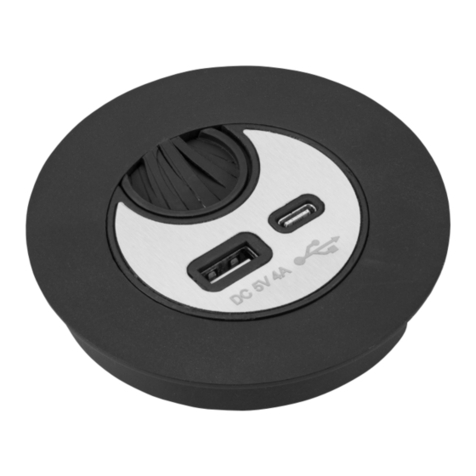
ML Accessories
ML Accessories Knightsbridge SK0012 Installation & maintenance manual
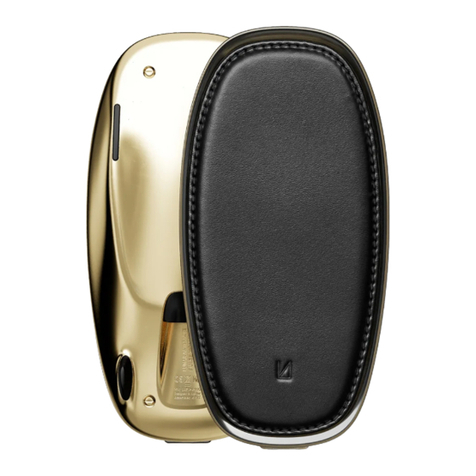
Lunar Artefacts
Lunar Artefacts PULSE VOLITARI user guide

Teltonika
Teltonika TeltoCharge installation manual
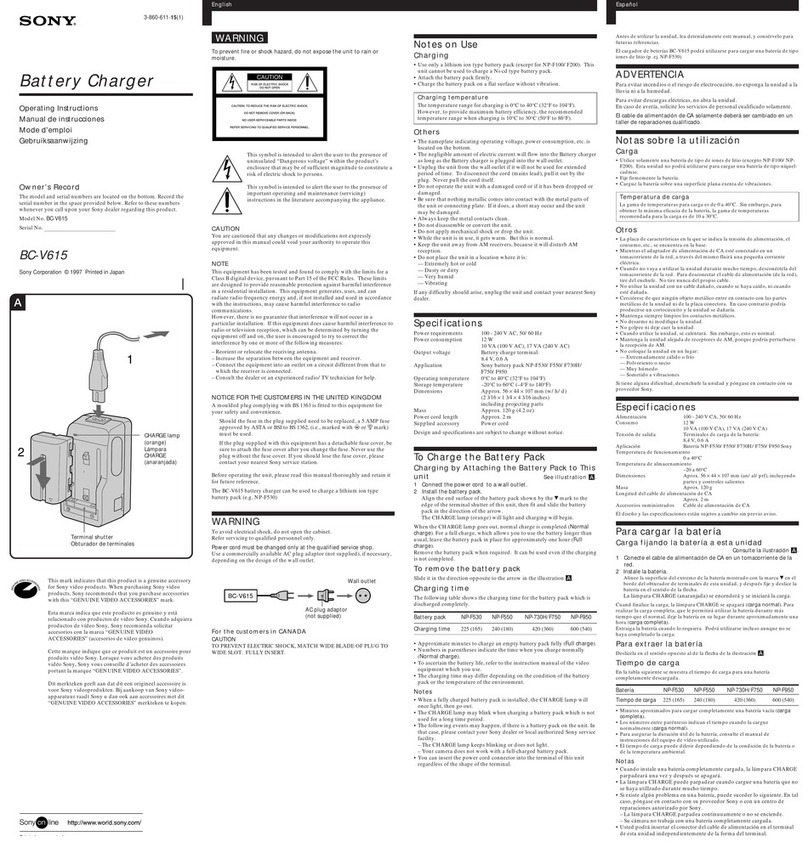
Sony
Sony BC V615 Operating instructions manual
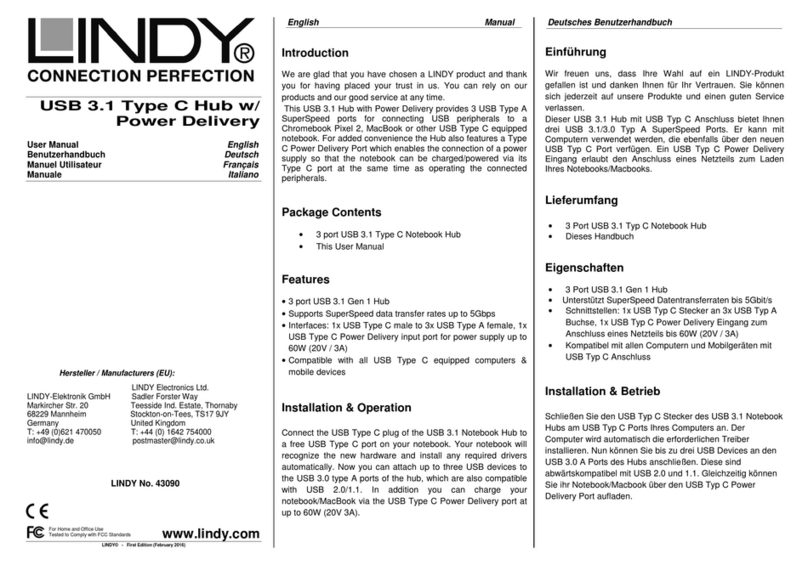
Lindy
Lindy 43090 user manual

Bosch
Bosch GAL 3680 CV Professional Original instruction
